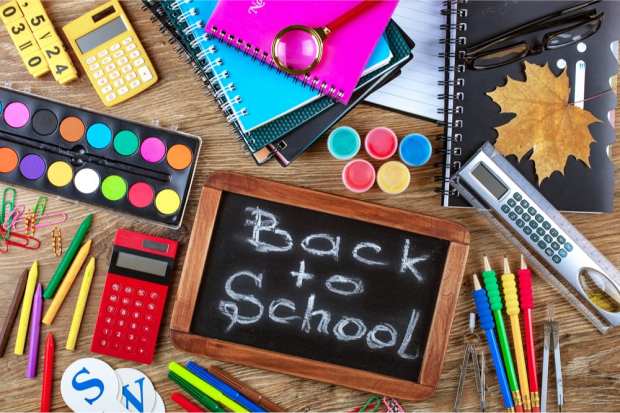Back-To-School Predictions Go Off The Charts

Back-to-school sales will set a record this year. The issue is whether it’s a record on the positive or negative side of the ledger, because projections for the first selling season of the pandemic are as far apart as they could possibly be.
On the positive side is the retailing trade group the National Retail Federation (NRF). On the negative side are several on- and off-the-record sources that say this year’s usual haul of apparel, school supplies and electronic devices has not even started yet despite the late date and will not begin to reach anything approaching previous years. The pandemic’s effect on school openings, delays and indecision regarding remote or in-class learning are driving the negative and possibly more realistic assessments.
For example, College Hill Custom Threads, which supplies logo-based goods for universities and collegiate student groups, told the Advertising Specialty Institute that sales could be off as much as 50 percent vs 2019.
“The sales season for back to school is still up in the air,” said Tony Poston, president of College Hill. “We’ve had some orders, but they are trickling in slowly. Usually, we have a lot of orders written up in May and June for back to school, but that wasn’t the case this year with uncertainty surrounding in-person instruction, athletic events and fraternity/sorority recruitment in the fall.”
Neil Saunders, managing director of research firm GlobalData PLC’s retail division, projects $26.4 billion in spending for elementary and high school, down 6.4 percent from 2019, according to Commercial-News. Back-to-college spending will fall even more, with sales down 37.8 percent from last year.
“It’s going to be a difficult back-to-school season,” Saunders said. “It’s retailers’ first big test. I don’t think the outcome is going to be good at all.”
There are two wild cards. The first is available spending when unemployment hovers around 10 percent and government stimulus payments are frozen in Washington, D.C. negotiations. The other appears to be electronics. Most of the positive projections for back to school are hanging their numbers on a remote learning school opening, which will mean more laptops and mobile phones For example, in the middle of the prediction pack, Deloitte’s annual back-to-school survey found spending will remain flat. It says spending for K-12 students at about $529 per student (even with 2019) and about $1,345 per college student. Spending is shifting toward digital products, the survey found.
On the far side of the spectrum is the NRF. Its research shows that parents with children in elementary school through high school say they plan to spend an average $789.49 per family, topping last year’s record $696.70. Overall spending, according to the NRF, is expected to total $33.9 billion, up from $26.2 billion last year and breaking the record of $30.3 billion set in 2012. The NRF admits that “electronics and items for virtual learning are driving a lot of that projection, and as school plans become clearer, consumers might adjust their spending.”
The NRF is also basing some of its projections on higher ticket prices from shopping online and a lack of comparison shopping for bargains.
“With consumers cautious about how much time they spend out in public, there is likely to be less going store-to-store to comparison shop this year,” Prosper Insights Executive Vice President of Strategy Phil Rist said in an NRF statement. “College shoppers, in particular, may be planning to choose just one or two places to pick up the items they need rather than browsing at multiple locations. And college students beyond their first year may already have most of the big purchases that they need.”
The truth is most likely somewhere in the middle. It’s hard to think that an economy as cautious as this one will produce record spending for back-to-school items, especially for high-ticket purchases. According to market research firm Canalys, in Q2 tablet shipments grew 26 percent. At the same time, desktop PC shipments dropped by an equivalent 26 percent while laptop shipments grew 24 percent. Whether or not these units sell through at retail remains to be seen, as does the unfolding drama of the pandemic and its effect on school attendance.
